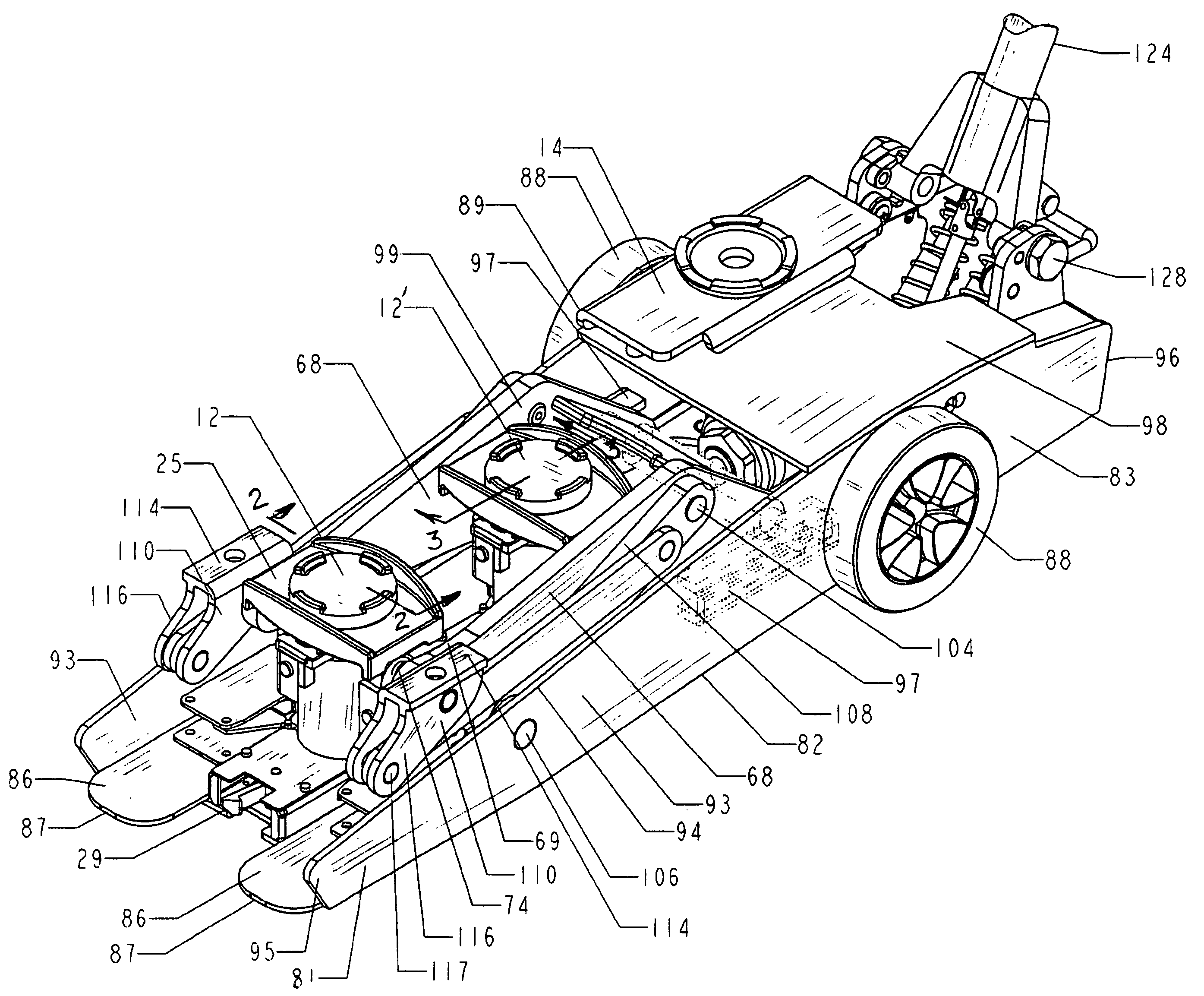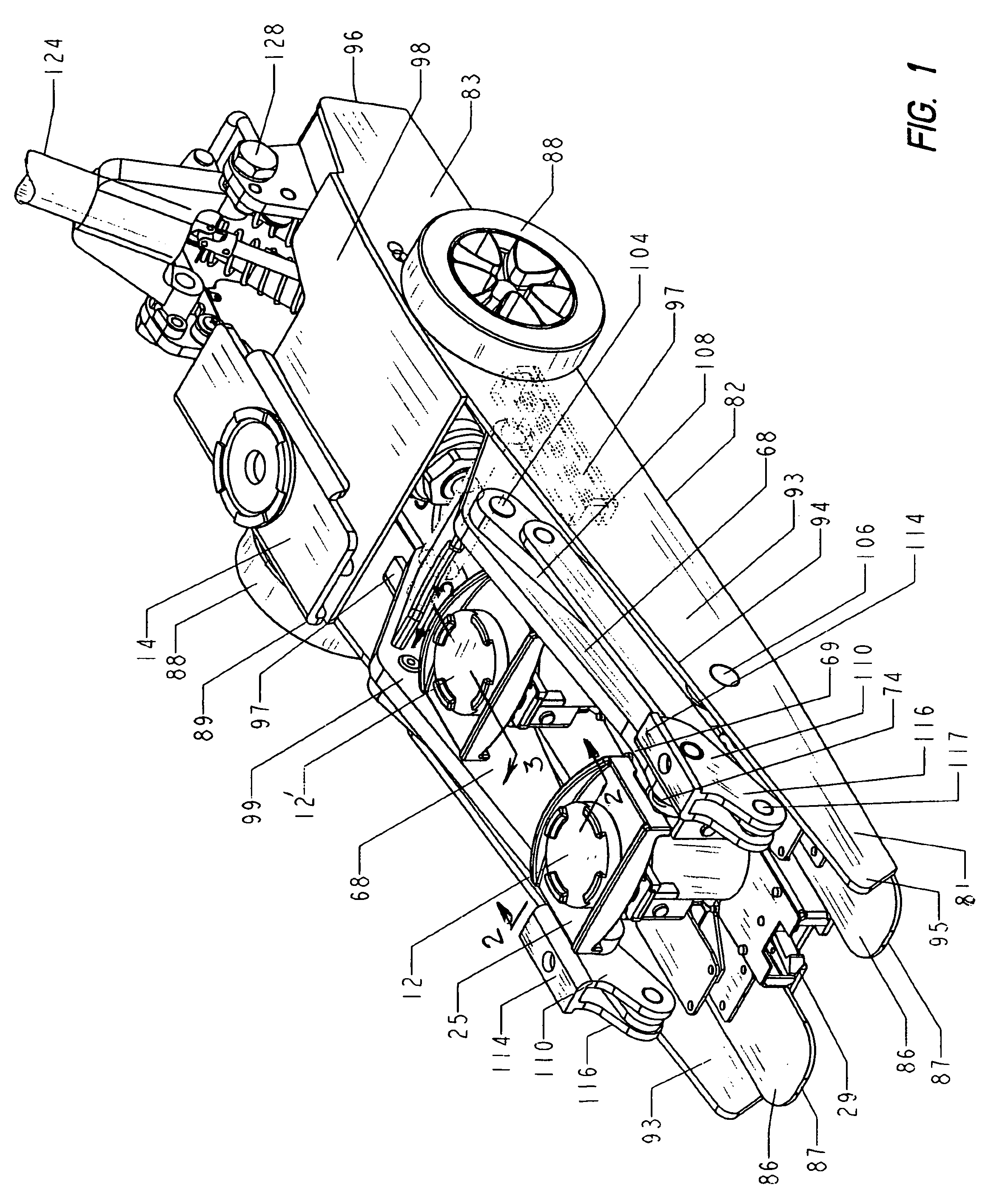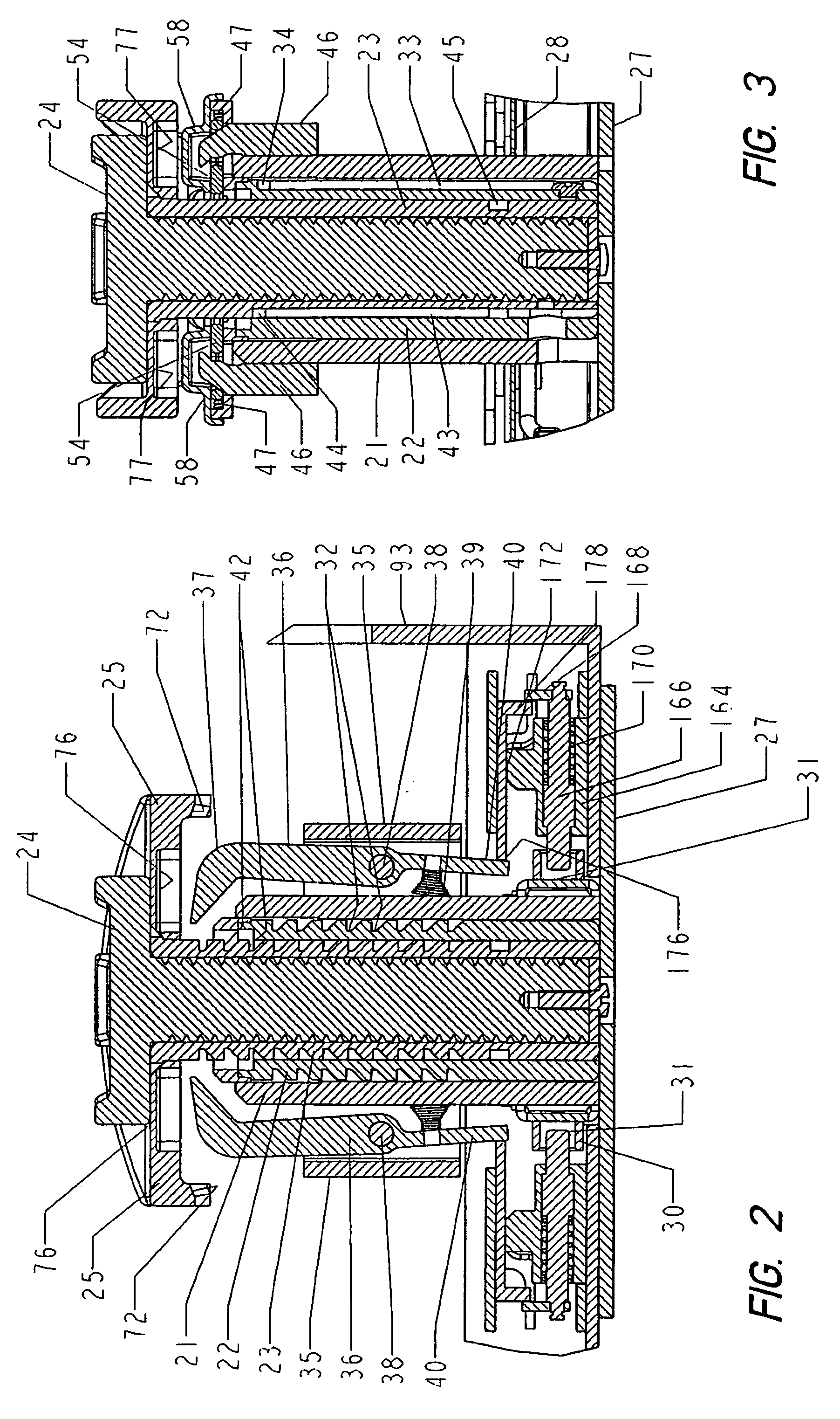Commercial lifting device-handle controls
a technology of lifting device and handle, which is applied in the field of commercial systems, can solve the problems of short life, inconvenient redesign, and inability to use the power unit thereafter, and achieve the effects of improving safety, reducing the risk of damage, and improving safety
- Summary
- Abstract
- Description
- Claims
- Application Information
AI Technical Summary
Benefits of technology
Problems solved by technology
Method used
Image
Examples
first embodiment
[0070]Referring first to FIG. 1 there is illustrated a mobile power unit 10 of the present invention for conventional use with one or more jack stands 12 and 12′ of the present invention for lifting and supporting a load. The power unit is also readily convertible for use directly as a load lifting jack by a manual two-position lift bridge 14. The lift bridge as shown in FIG. 1 is placed on the power unit in its first (stored) position, and can be manually placed into its second (operative) position (see FIG. 29) on the forward end of the power unit to convert the power unit for use directly as a load-lifting jack. The two-position lift bridge will be discussed later in detail. The jack stands are designed to have a very low initial height, and the power unit is designed to be very sleek, having a smooth, arcuate, low-profile for maneuvering into low lifting applications and having a unique functional and industrial appearance. The system will be discussed in terms of its structure ...
second embodiment
[0161]Referring now to FIGS. 32-34, the two-part lifting system is shown wherein a power unit 230 incorporates an improved automatic-slide-forward-bridge assembly 240. Briefly, the slide forward bridge is slidably retained on the upper surfaces of the lift arms and is always biased toward the forward ends thereof. When the power unit has jack stands loaded in the frame thereof, the jack stands automatically push the bridge rearward along the lift arms, and the power unit is operable for use with the jack stands. When there are no jack stands in the frame of the power unit, and the lift arms are lowered to their lowest position in the frame, the bridge is automatically biased onto the forward ends of the lift arms, and the power unit is operable for use directly as a load lifting jack.
[0162]The power unit 230 features the same components and inter-engagement of the components as previously discussed in reference to power unit 10, except the power unit 230 does not incorporate the two...
PUM
 Login to View More
Login to View More Abstract
Description
Claims
Application Information
 Login to View More
Login to View More - R&D
- Intellectual Property
- Life Sciences
- Materials
- Tech Scout
- Unparalleled Data Quality
- Higher Quality Content
- 60% Fewer Hallucinations
Browse by: Latest US Patents, China's latest patents, Technical Efficacy Thesaurus, Application Domain, Technology Topic, Popular Technical Reports.
© 2025 PatSnap. All rights reserved.Legal|Privacy policy|Modern Slavery Act Transparency Statement|Sitemap|About US| Contact US: help@patsnap.com



